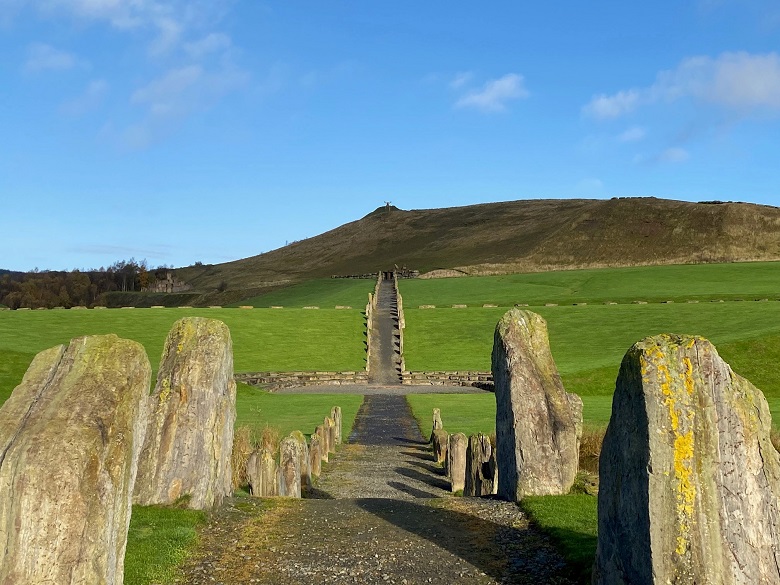The historic environment plays a huge role in the identity, culture and economy of Scotland. From the national icons like Stirling Castle and the Ring of Brodgar to the everyday buildings, landscapes and streetscapes where we live, work and play that contribution is well-recognised. It is also generally accepted that there should be an effective system of heritage protection for our most important places.
Scotland’s current system is the product of over a 100 years of incremental developments. Is this detailed approach to recognition and protection robust and proportionate? And what can we do to make sure it reflects emerging priorities and current challenges?
To help answer these questions we’ve launched a comprehensive review of our approach to heritage designation. These systems include:
- Listed buildings
- Scheduled monuments
- Gardens and designed landscapes
- Battlefield inventory
- Historic Marine Protected Areas
These lists and the recognition that they give and requirements that they introduced, have unquestionably been central to the survival of many of our best-loved sites and buildings. They are the product of decades of heroic research, exploration and argument. From Neolithic tombs and Victorian schools to 20th-century housing estates and post-industrial landmarks, these designations have helped ensure that our built heritage endures for future generations.

‘Livi’ Skatepark opened in 1981 and is the earliest surviving purpose-built skatepark in Scotland. In February 2024, we listed it at category B.
But the world has changed. And so have the expectations of the people who live, work, and build in Scotland today.
Why we’re reviewing designation
Heritage designation revolves around making decisions. These decisions can be very challenging and demand that we examine what we value, what we protect, and how we balance the past with the needs of the present and future.
Over the years, our designation systems have grown organically, shaped by decades of research, debate, and public interest. Some of them were designed in a different era, before digital mapping and online access, and before we had the tools to hear from a truly diverse range of voices.
Today, people expect more. They want to see a heritage system that reflects the full breadth of Scotland’s society. More and more we’re asked to review not just the grand or the ancient, but the everyday and the overlooked. Understandably, people want accurate, up-to-date information and they want to be part of the conversation.
What we’ve heard so far
To guide our review, we worked with Main St consultants to engage with stakeholders across the sector. We asked: Is our current approach still fit for purpose? What’s working and what isn’t?
The feedback was clear. There’s still strong support for the existing frameworks. People value the protection that designation offers. But there’s also a desire for change. Not a radical overhaul, but thoughtful, evidence-based evolution.
Stakeholders told us they want HES to be more proactive. They want us to lead, not just respond. They want better data, clearer priorities, and more transparency in how decisions are made. And they want a system that’s flexible enough to recognise emerging heritage (like the best of the 1980s and 1990s) before it’s lost.
You can download Main St’s engagement report here.

Crawick Multiverse is a striking example of early 21st-century land art, created by Charles Jencks on a former coal mine between 2011 and 2017. It joined the inventory of Gardens and Designed Landscapes in 2024.
Our draft strategy: Key themes
We’ve taken that stakeholder feedback and used it to shape a draft strategy, now open for public consultation. It’s a high-level plan for how we’ll deliver designation work in the years ahead.
Here are some of the key themes:
- Looking forward: We’re not proposing sweeping changes, but we do want to create space for long-term thinking. That means gathering evidence now so we’re ready to advocate for legal or policy changes in the future.
- Understanding impact: We need better data on the benefits and challenges of designation. How does it affect communities, developers, or local authorities? We’ll work with others to build a stronger evidence base.
- Improving our records: Many of our records are outdated or incomplete. That’s frustrating for users and undermines trust. We’re prioritising systems that help us update information at scale and inviting users to help us spot errors.
- Serving our users: We’ve focused heavily on reactive work, responding to requests to list or delist sites. That’s important, but we also need to improve how we prioritise and manage our workload to deliver better outcomes.
- Setting the agenda: We want to be more strategic about what we protect and why. That means investing in research, engaging with communities, and being clear about our priorities.
Why this matters now
These challenges and concerns aren’t new, but they are growing. And they underline the importance of having a clear and fair system for heritage designation that is fit for future challenges.
Recent discussions in Scotland have brought heritage protection into sharp focus.
The positive reaction to the designation of sites like Glasgow Central Mosque, Crawick Multiverse and Livingston Skatepark has shown us that there is a public appetite for protecting a wider range of sites and an appreciation for heritage of the recent past.
Planning for large scale infrastructure projects such as energy generation and transmission has demonstrated some of the issues with the quality, accuracy and coverage of rural designations.

The modern Brutalist multi-storey ‘slab’ block of flats at Gilcomstoun Land became Category A Listed in 2021.
Meanwhile, when we listed the high-rise flats in Aberdeen as Category A in 2021, it sparked a range of responses from stakeholders. Some voiced concerns about the potential burden this could place on local communities, while others saw it as an opportunity to strengthen local identity and unlock economic benefits. The appeal against those decisions addressed some key principles of the current approach.
Our application of our policy in deciding not to list Cumbernauld Town Centre was contested and we know that debate will continue when we review that policy.
We need to be able to look further ahead and to shape the heritage of the future. The current approach of normally only considering sites over 30 years old for designation is fairly well-known, but we’re not confident that we have all of the evidence we need to protect the best of the 1980s, much less the 1990s.
Looking ahead, it has not escaped our notice that the 30th anniversary of the opening of the Scottish Parliament building is within the lifetime of our strategy!

Have your say
This is an important milestone. Our draft strategy is open for consultation until 1 July 2025, and we want to hear from as many people as possible.
Whether you’re a heritage professional, a local authority planner, a community group, or simply someone who cares about Scotland’s places, we invite you to share your views. What should we protect? How should we do it? And how can we make the system work better for everyone?
We’re also hosting stakeholder events with the Built Environment Forum Scotland on 19 June and 23 June. And later this summer, our Talking About Heritage programme will offer more opportunities to get involved in shaping heritage policy.
Find out more and book to attend a consultation event:

